0 to 20 milliamp output pressure transmitters with a 3-wire or 4-wire configuration for installations where the positive voltage supply is separated from the current loop signal wires. 3 & 4 wire 0-20mA output pressure transmitter can utilise the full supply voltage range since the it is reference to the supply common.
Products
 DPS300 User Switchable Pressure Range, Volts or Current Output Low DP Sensor - The DPS 300 is a low range HVAC differential pressure sensor. The lowest possible pressure range is 0...100 pascals. 2 or 3 switchable pressure ranges, plus volts or current output are included with most standard configurations.
DPS300 User Switchable Pressure Range, Volts or Current Output Low DP Sensor - The DPS 300 is a low range HVAC differential pressure sensor. The lowest possible pressure range is 0...100 pascals. 2 or 3 switchable pressure ranges, plus volts or current output are included with most standard configurations.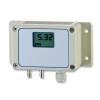 DPS200 HVAC Differential Pressure Transmitter - Differential air pressure sensor with a 10 volt or a 4-20mA output for building ventilation applications. Ranges from 0 to 6 mbar up to 0 to 1000 mbar.
DPS200 HVAC Differential Pressure Transmitter - Differential air pressure sensor with a 10 volt or a 4-20mA output for building ventilation applications. Ranges from 0 to 6 mbar up to 0 to 1000 mbar.
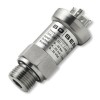 DMP331 Precision Pressure Transmitter
DMP331 Precision Pressure Transmitter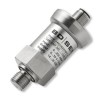 DMP343 Low Range Pneumatic Pressure Sensor
DMP343 Low Range Pneumatic Pressure Sensor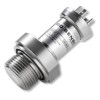 DMK331P Flush Diaphragm Pressure Sensor
DMK331P Flush Diaphragm Pressure Sensor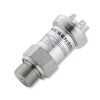 DMP333 High Range Precision Pressure Transmitter
DMP333 High Range Precision Pressure Transmitter
Applications
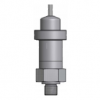 40 bar absolute 0-20mA output air pressure sensor for pneumatic monitoring - An absolute pneumatic pressure monitoring sensor for compressed air use to measure pressure of air over a range of 0 to 40 bar abs from the 1/4 BSP P male process connection, and sending the corresponding 0-20mA signal through the weatherproof cable electrical connection.
40 bar absolute 0-20mA output air pressure sensor for pneumatic monitoring - An absolute pneumatic pressure monitoring sensor for compressed air use to measure pressure of air over a range of 0 to 40 bar abs from the 1/4 BSP P male process connection, and sending the corresponding 0-20mA signal through the weatherproof cable electrical connection. 600 barg 0-20mA output hydraulic oil pressure transmitter for mobile rail vehicle system controls - A high range pressure transmitter for hydraulic control use to measure pressure of mineral hydraulic oil on mobile rail vehicle systems over a range of 0 to 600 bar g from the G1/2 male process connection, and sending the corresponding 0-20mA signal through the DIN plug electrical connection.
600 barg 0-20mA output hydraulic oil pressure transmitter for mobile rail vehicle system controls - A high range pressure transmitter for hydraulic control use to measure pressure of mineral hydraulic oil on mobile rail vehicle systems over a range of 0 to 600 bar g from the G1/2 male process connection, and sending the corresponding 0-20mA signal through the DIN plug electrical connection. 3000 psi absolute 0-20mA output mineral oil pressure sensor for hydraulic control use - An absolute high pressure sensor for hydraulic control use to measure pressure of mineral hydraulic oil over a range of 0 to 3,000 psi absolute from the G1/4 male process connection, and sending the corresponding 0-20mA signal through the M12 connector electrical connection.
3000 psi absolute 0-20mA output mineral oil pressure sensor for hydraulic control use - An absolute high pressure sensor for hydraulic control use to measure pressure of mineral hydraulic oil over a range of 0 to 3,000 psi absolute from the G1/4 male process connection, and sending the corresponding 0-20mA signal through the M12 connector electrical connection.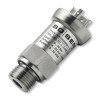 Vacuum range 0-20 milliamp output pressure transducer for leak testing - Pressure transducer for use in vacuum chamber to measure vacuum pressure from 0 to -1 bar to conduct vacuum leak test on sterilising chamber.
Vacuum range 0-20 milliamp output pressure transducer for leak testing - Pressure transducer for use in vacuum chamber to measure vacuum pressure from 0 to -1 bar to conduct vacuum leak test on sterilising chamber.
Product Help
Checklist for 0 to 20 milliamps output pressure transmitter requirements
Define your 0-20mA output signal pressure transmitter requirements using this checklist:
- Pressure range?
- Output signal? 0-20 milliamps
- Accuracy?
- Electrical connection?
- Process connection?
- Process media type?
- Temperature range?
